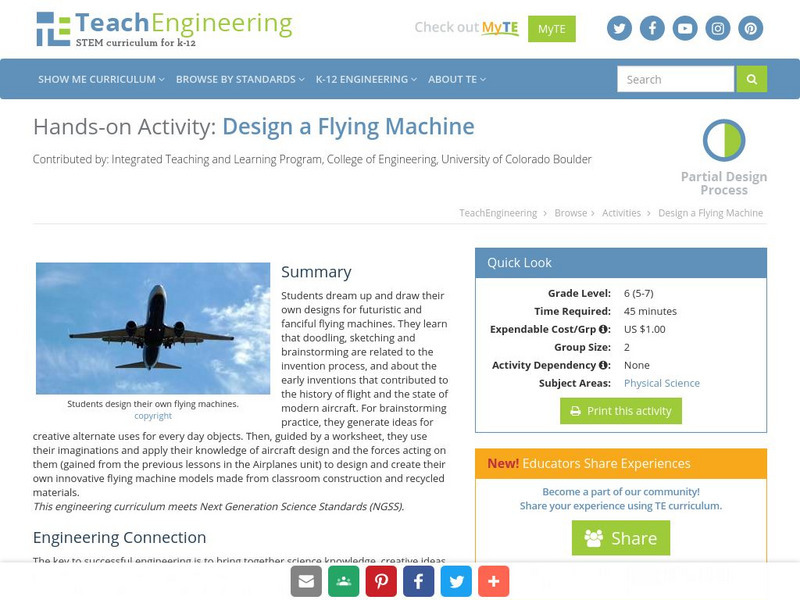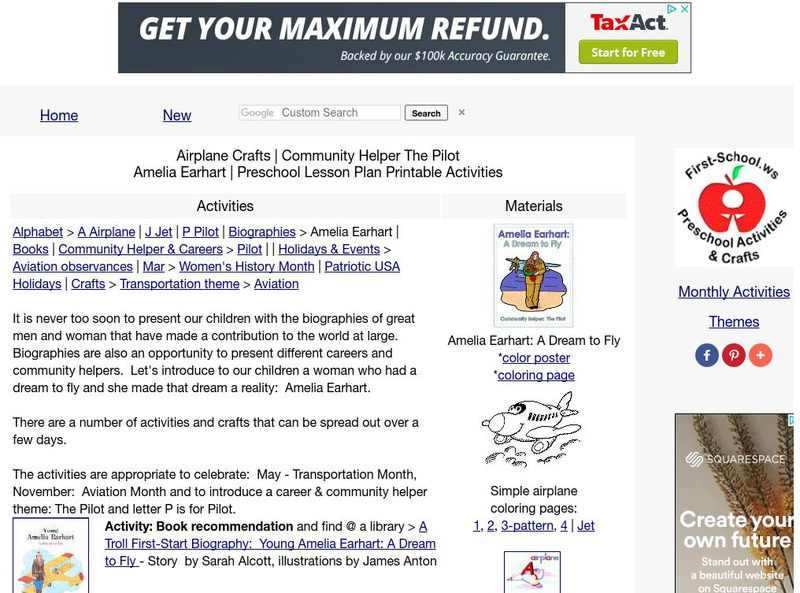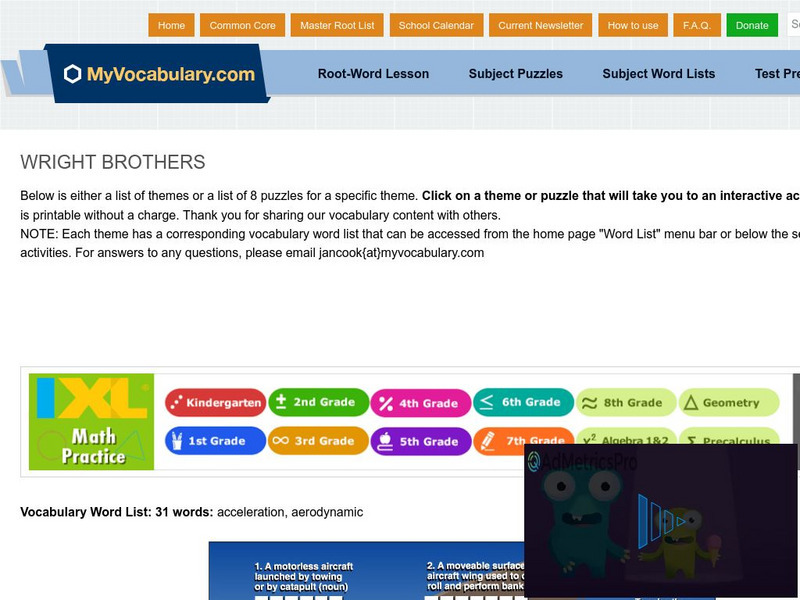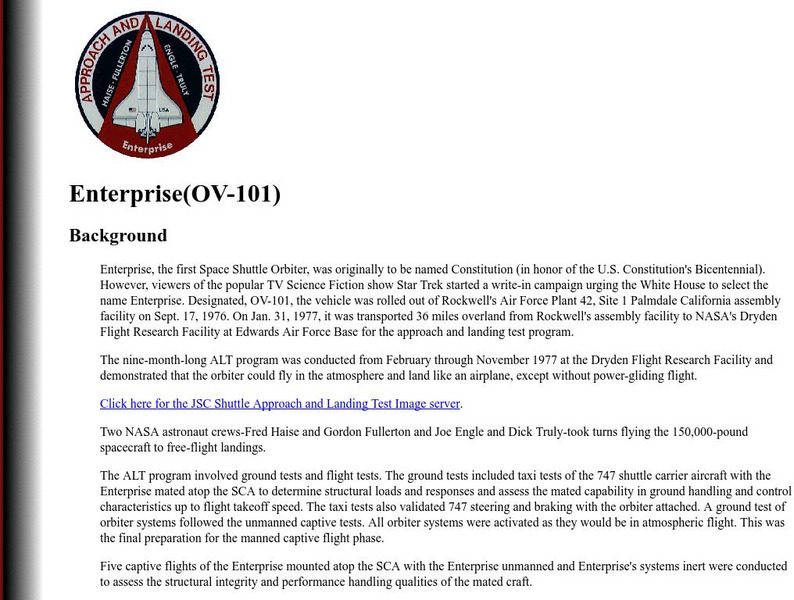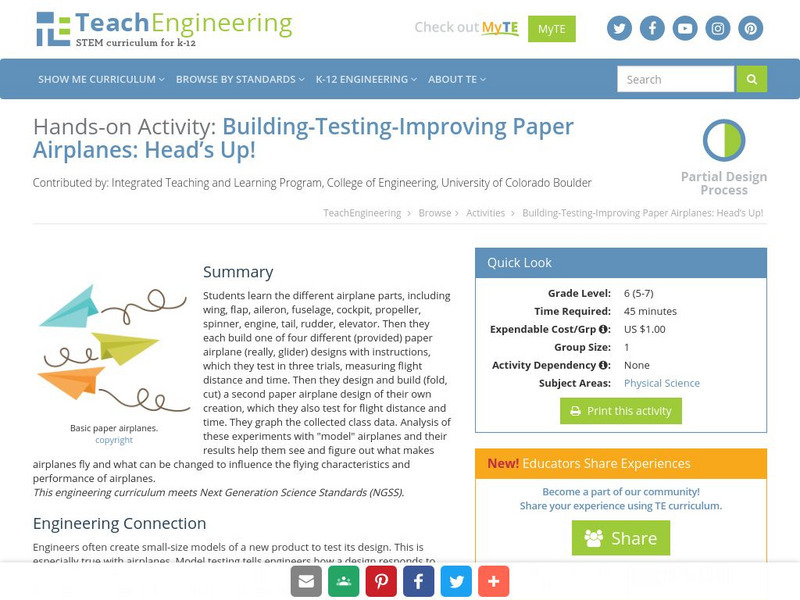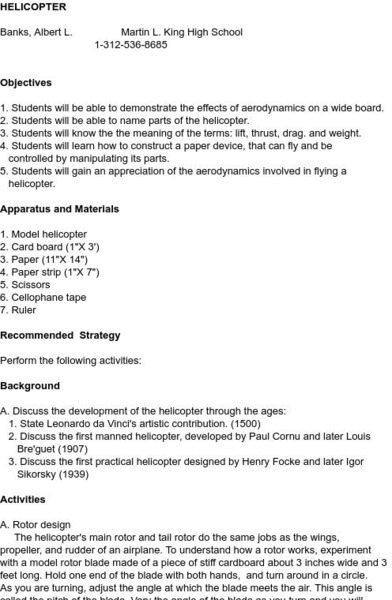Smithsonian Institution
Smithsonian Learning Lab: Airplanes and Airports: How to Take Off Without Ever Leaving the Ground
Smithsonian Education presents "Airplanes and Airports: How to Take Off Without Ever Leaving the Ground." Teachers can download this teaching package that discusses airplanes and airports. Included in the discussion are the forces of...
Smithsonian Institution
Smithsonian Learning Lab: How Things Fly: Activities for Teaching Flight
Through this series of three lessons, students will gain an understanding of the basics of flight. They will learn about the four forces of flight and practice their observation skills through a number of fun experiments. In addition,...
TeachEngineering
Teach Engineering: Design a Flying Machine
The purpose of this activity is for the students to draw a design for their own flying machine. They will apply their knowledge of aircraft design and the forces acting on them. The students will start with a brainstorming activity where...
Science Education Resource Center at Carleton College
Serc: Investigating Flight With Paper Airplanes
Students will experiment with different styles of paper airplanes, create questions to test, and design experiments that will allow them to gather data related to their question. They will record their data, using graphs where...
University Corporation for Atmospheric Research
Ucar: Learn to Fly! Uav First Flight
Students begin to learn basics of flying UAVs/drones. This simple initial flight includes a take-off, hovering at different heights, and landing.
Science Education Resource Center at Carleton College
Serc: Designing Fast and Slow Airplanes and Measuring Velocity
In this activity, young scholars design their own airplanes and fly them. The challenge is to create a fast plane and a slow plane and compare the speed to the design.
Other
Plane Math: Activities: Plane Math Enterprises (Design an Airplane)
Students are trained on how to design an airplane. The activity demonstrates how math applies to aeronautics.
NASA
Nasa: History of Flight
How did we learn to fly? Resource takes users back through time to discover where the history of flight all started. Offers links to games, art and stories as well as activities.
TeachEngineering
Teach Engineering: What Makes Airplanes Fly?
Students begin to explore the idea of a force. To further their understanding of drag, gravity and weight, they conduct activities that model the behavior of parachutes and helicopters. An associated literacy activity engages the class...
Other
Lesson Plan Activities: Amelia Earhart and Airplanes
This site features several instructional activity ideas and activities on Amelia Earhart and airplanes for young learners.
Science and Mathematics Initiative for Learning Enhancement (SMILE)
Smile: Lab Activity: Aviation
This site from the Illinois Institute of Technology provides a student lab activity in which the flight of a paper airplane is investigated and studied. Designed for primary grades, but easily adaptable for junior high students.
Smithsonian Institution
National Air and Space Museum: Wright Brothers: Interactive Experiments
Three interactives in an online exhibition about the Wright Brothers. The first is an engineering activity on the forces of flight, and is accompanied by a lesson plan for Grades 6-8. The second is a gallery of original artifacts related...
TeachEngineering
Teach Engineering: Balsa Glider Competition
The purpose of this activity is to bring together the students' knowledge of engineering and airplanes and the creation of a glider model to determine how each modification affects the flight. The students will use a design procedure...
PBS
Pbs Teachers: Supersonic Dream
Examine how fuel use affects the mass of different planes during flight. This activity teaches students how to determine the per person fuel cost of a transatlantic flight for seven airplanes, and display the results on a bar graph....
Vocabulary University
My vocabulary.com: Wright Brothers
This has a variety of vocabulary puzzles and activities using 31 vocabulary words pertaining to the Wright Brothers. It also offers an extensive vocabulary word list for aviation and airplanes.
Smithsonian Institution
National Air and Space Museum: Wright Brothers: The Invention of the Aerial Age
Beautiful, well-done site from the Smithsonian on the Wright Brothers: Who were they and what was the importance of the era they ushered in? Their roots are traced back to the Great Migration. Classroom activities and interactive...
PBS
Pbs Learning Media: Amelia Earhart: Aviator, Record Breaker, and Activist
Through two primary source activities and a short video, students will learn about Earhart's passion for flying and determination to succeed as a female aviator.
TeachEngineering
Teach Engineering: Windy Tunnel
The purpose of this activity is to demonstrate Bernoulli's Principle as it relates to winged flight. The students will use computers to see the influence of camber and airfoil angle of attack on the lift.
TeachEngineering
Teach Engineering: Heads Up
The purpose of this activity is to demonstrate some of the different parts of an airplane through the construction of a paper airplane. Students will build several different kinds of paper airplanes in order to figure out what makes an...
NASA
Nasa: Beginner's Guide to Aerodynamics
Includes exhaustive information and a wealth of activities pertaining to aerodynamics and the physics of flight.
Science and Mathematics Initiative for Learning Enhancement (SMILE)
Smile: Lab Activity: Helicopter
The Illinois Institute of Technology lets students investigate the aerodynamics of a helicopter, focusing on the variables which effect the lift, thrust, drag, and weight. Students investigate the effects of aerodynamics on a wide board.
TeachEngineering
Teach Engineering: Adaptations for Aeronautical Engineering
This activity first asks the students to study the patterns of bird flight and understand that four main forces affect the flight abilities of a bird. They will study the shape, feather structure, and resulting differences in the pattern...
Alabama Learning Exchange
Alex: Building a Paper Airplane Using Bernoulli's Principle
This is a culmination activity used after students have studied Bernoulli's Principle as part of a unit on forces and fluids. Students will use the Internet, textbooks, library resources and their cooperative learning group to design...

